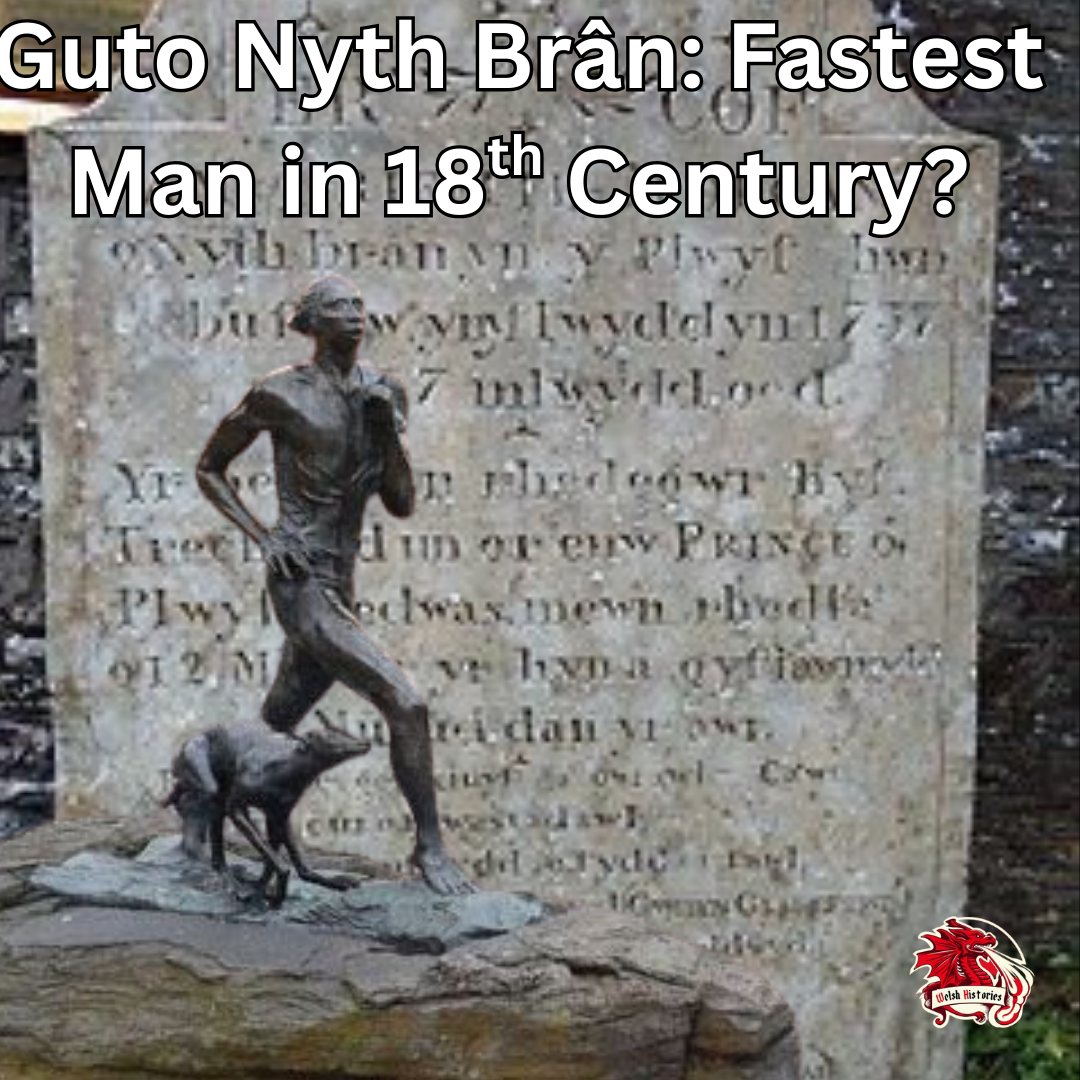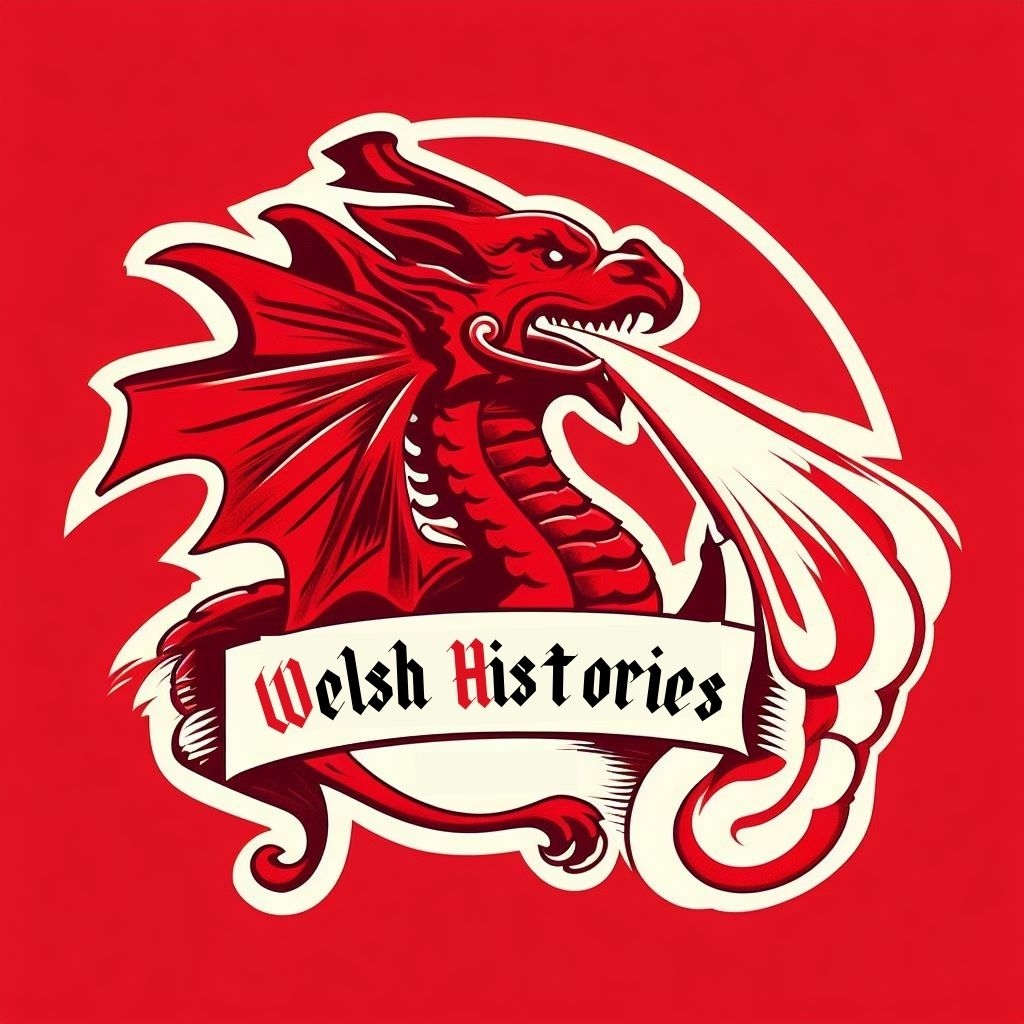Your basket is currently empty!

Guto Nyth Brân: Fastest Man in 18th Century?
Here’s a post about Griffith Morgan, perhaps better known as Guto Nyth Brân (Guto, being the shortened version of Griffith, and Nyth Brân (English ‘crows nest’) being his parent’s farm near Porth, in the borough of Rhondda Cynon Taff).
Guto (1700-1737) was a remarkable athlete but little is known of the actual truth of his feats – many of which have now become legend.
Guto was born in the small village of Llwyncelyn, a remote village, during the days when Cardiff was little more than a fishing town and the largest town in Cymru was Wrexham.
The abilities of Guto were noted early on and it is said that, when he was helping his father herd sheep, he managed to chase and catch a hare (no easy task). It was then rumoured he went on to catch hare, foxes and birds and this news quickly spread through the small community.
Well over two-hundred years before the introduction of video games, young men would keep busy in their spare time by taking part in rural sports, such as football over extended distances, squirrel hunting and foot racing – the latter of which was extremely competitive and had a huge following in the area. Substantial prizes could even be won.
Hirwaun Common was the perfect place for many of these events. It was convenient for the men of the Rhondda and Aberdare in that is was far enough away from the authorities’ attention. Large bets were placed on local men and results of these contests, after all.
The Llanwonno parish history records that the first race Guto won, ran on Hirwaun Common, earned him a prize of £400 – a lot of money in those days, comparable to around £88,000 today. Such was his speed that eventually there were few who could compete with him.
His talent was then noticed by a local shop keeper, Siân o’r Siop (Siân of the Shop). This led to her becoming his trainer and manager.
The legendry stories of Guto were passed down orally from generation to generation, until they were recorded by the Rev W Thomas (Glanffrwyd), for the first time in serial form in the 1880s in a local Welsh newspaper called Y Darian. From these articles, we learn that he was able to rely on his significant speed to run after and catch hares, foxes and even birds.
One tale records that he could sprint from his hometown to Pontypridd and back, a round distance of seven miles, before his mother’s kettle boiled. Another story tells us that he could blow out his candle and be in bed before the light faded.
Finding willing opponents had become far more challenging and, not long before turning 30, he fell in love with Siân and retired from competition.
Some years later a runner emerged known as the Princes of Bedwas. Siân persuaded Guto to come out of retirement in 1737 for one final race with the winning purse being 1000 Guineas equivalent to about £20,000 today.
The race was over 12 miles between Newport and Bedwas. Prince took an early lead, but on an uphill sprint from Guto, saw him surge past Prince near the end and beat his rival, taking the prize and the honour of being named the fastest man of his time.
Tragically, the race took a fatal toll on Guto.
It is said that during the post-race celebrations he collapsed and died in his lover’s arms after an over vigorous congratulatory back-slap.
His body was laid to rest at St Gwynno Church in the Llanwynno forestry. A large gravestone was erected in 1866, over 100 years after his death.
Every year on New Year’s Eve a race called Ras Nos Galon is run in Mountain Ash in the Cynon Valley.
A 5 kilometre race which attracts runners from all over Great Britain. In 2009 some 800 runners entered the race and 10,000 spectators.
The race starts with a church service at Llanwynno and a wreath is placed in the grave of Guto in the church graveyard. After lighting a torch, it is then carried to the town of Mountain Ash where the race begins.
(This was a blog submission from Padrig. Diolch, mate!)
More from Welsh Histories
Welsh Histories is a Welsh history celebrating platform which looks to promote all aspects of Welsh history. Though we focus predominantly on native Welsh history, we do also share the non-native aspects from time to time. You can follow us on Facebook; Instagram or Twitter for more. You can also support us as a member of our Patreon community. A reader? We also have our very own Welsh Histories Shop where we sell our Welsh Histories Magazine. Diolch yn fawr iawn and keep enjoying Welsh Histories.
Niklas is the founder, owner, manager, editor, writer, video creator, voice over artist, and so forth, of Welsh Histories. He is passionate about the preservation of Welsh culture; the rejuvenation of the Welsh language and the promotion of Welsh history. Niklas currently resides in Pune, Maharashtra, with his beloved wife.

